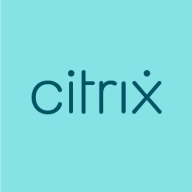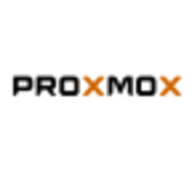

Citrix XenServer and Proxmox VE are leaders in virtualization solutions. Proxmox VE seems to have the upper hand due to its cost-effectiveness and strong community support, which particularly benefits smaller and medium-sized businesses.
Features: XenServer provides a Windows-based management console, making it easy to install and supports GPU features alongside live migration. Proxmox VE offers support for both container-based and full virtualization, extensive storage options, and open-source flexibility, making it appealing for diverse virtualization needs.
Room for Improvement: XenServer's areas for improvement include better support for Linux guests, a web-based interface, and overcoming challenges related to advanced features without third-party assistance. Proxmox VE could enhance its usability with a more intuitive GUI, improve its built-in backup solutions, and reduce the need for advanced Linux expertise.
Ease of Deployment and Customer Service: XenServer is mostly deployed in on-premises setups, offering support based on subscription but sometimes lacking timely assistance. Proxmox VE is recognized for easy deployment across different environments, with community-backed support unless a paid option is chosen, which may not match proprietary service responsiveness.
Pricing and ROI: XenServer can be affordable, especially when bundled with Citrix XenDesktop, but standalone purchases may be cost-prohibitive. Proxmox VE, being free and open-source, only incurs costs through optional support subscriptions, presenting an attractive option for budget-sensitive operations, allowing for strategic fund allocation to other aspects.
My clients generally maintain their Citrix infrastructure without shifting, suggesting stability and reliable operation as Citrix XenServer is fully established.
With valid licenses, we can access hotfixes, service packs, knowledge base, self-help tools, diagnostics, downloads, live chat, and phone support.
They do not provide adequate support for midsize businesses.
There appear to be very few engineers at Citrix who understand the problems.
Familiarity with Linux can enhance its performance and usability.
Citrix XenServer is definitely scalable enough.
It runs very stably.
I haven't had any significant issues with Citrix XenServer installations over the last 10-15 years.
Although the product is technically competitive, it is not widely known or used due to poor marketing.
Citrix needs to improve the hypervisor, specifically in security and performance.
We can implement high availability and live migration with pools, along with security and backup to enable role-based access control for safer management.
It is cheaper compared to its competitors.
Organizations save substantial money because competing solutions, such as VMware, cost double or triple.
The pricing and licensing policy of Citrix XenServer is not transparent and quite confusing.
The benefits from using Citrix include increased productivity, as users don't have to search for what they need to open.
The most valuable feature is transferring and sharing applications that allow users to move files between devices, including smartphones, tablets, and computers without needing USB cables, internet connections, or data usage.
It provides secure access to applications and resources, which is crucial for us and our clients.
| Product | Market Share (%) |
|---|---|
| Proxmox VE | 16.1% |
| Citrix XenServer | 4.8% |
| Other | 79.1% |



| Company Size | Count |
|---|---|
| Small Business | 29 |
| Midsize Enterprise | 8 |
| Large Enterprise | 18 |
| Company Size | Count |
|---|---|
| Small Business | 44 |
| Midsize Enterprise | 11 |
| Large Enterprise | 10 |
Citrix XenServer provides virtualization with high availability and robust security, offering seamless VM migration and centralized management through XenCenter. Its expansive compatibility and integration enhance its appeal, particularly for SMBs.
Citrix XenServer is recognized for its user-friendly virtualization capabilities, facilitating dynamic scalability and efficient resource management. It supports a wide range of operating systems and integrates with Citrix solutions for improved operations. Businesses benefit from its affordability and ease of deployment. Despite its strengths, users seek improvements in third-party tool integration, network and backup management, and storage flexibility. High costs, limited Linux support, system complexity, technical support, and hardware compatibility remain challenges. An updated and intuitive interface is in demand for more seamless operations across platforms.
What are the key features of Citrix XenServer?In diverse industries, Citrix XenServer is leveraged for server and desktop virtualization, cloud automation, and infrastructure management. Many deploy it for virtual desktop infrastructure, application delivery, on-premises data centers, and to support Citrix application delivery like XenApp and XenDesktop. Enterprises migrating from VMware often find Citrix XenServer cost-efficient for these applications, serving as a main computing platform for enterprise applications including ERP systems and SQL Servers.
Proxmox VE is a complete virtualization management solution for servers. It is a powerful open-source platform and supports two virtualization technologies - KVM (Kernel-based Virtual Machine) for virtual machines and LXC for containers. Proxmox VE has a central user interface that allows you to manage not only VMs and containers, but also storage resources, network configuration, and high availability for clusters. It is enterprise-ready and is valued for its scalability and maximum flexibility, enabling you to virtualize very demanding workloads. Proxmox VE makes it possible for you to easily install, manage, and monitor hyper-converged (HCI) data centers.
Proxmox VE Key Features
The Proxmox VE platform has many powerful features, including:
pen-source software, high-available clusters, command line, fencing, a web-based management interface, flexible storage options, REST API, live/online migration, storage replication stack, software defined storage, virtualized networking, backup and restore, two-factor authentication, role-based administration, and VM templates and clones.
Proxmox VE Benefits
Some of the biggest benefits of Proxmox VE are:
Reviews From Real Users
Here is some feedback from some of our users who are currently using the solution:
A PeerSpot user who is a director at a tech services company says, “The most valuable features of Proxmox VE are the ease of containerization. Overall the solution is generic, feature-rich, and has compatibility.”
Another PeerSpot user who is a head of IT operations at a tech services company mentions that "In addition to the virtualization, the firewall and the routing functions that it provides are valuable."
Deepen D., director and CTO at TechnoInfotech, expresses that "The feature that I have found most valuable is that its storage container, LVM, and everything else work out of the box."
We monitor all Server Virtualization Software reviews to prevent fraudulent reviews and keep review quality high. We do not post reviews by company employees or direct competitors. We validate each review for authenticity via cross-reference with LinkedIn, and personal follow-up with the reviewer when necessary.